Problem
I have a dataframe that composes of > 5 variables at any time and am trying to do a K-Means of it. Because K-Means is greatly affected by outliers, I've been trying to look for a few hours on how to calculate and remove multivariate outliers. Most examples demonstrated are with 2 variables.
Possible Solutions Explored
mvoutlier - Kind user here noted that mvoutlier may be what I need.
Another Outlier Detection Method - Poster here commented with a mix of R functions to generate an ordered list of outliers.
Issues thus Far
Regarding mvoutlier, I was unable to generate a result because it noted my dataset contained negatives and it could not work because of that. I'm not sure how to alter my data to only positive since I need negatives in the set I am working with.
Regarding Another Outlier Detection Method I was able to come up with a list of outliers, but am unsure how to exclude them from the current data set. Also, I do know that these calculations are done after K-Means, and thus I probably will apply the math prior to doing K-Means.
Minimal Verifiable Example
Unfortunately, the dataset I'm using is off-limits to be shown to anyone, so what you'll need is any random data set with more than 3 variables. The code below is code converted from the Another Outlier Detection Method post to work with my data. It should work dynamically if you have a random data set as well. But it should have enough data where cluster center amount should be okay with 5.
clusterAmount <- 5
cluster <- kmeans(dataFrame, centers = clusterAmount, nstart = 20)
centers <- cluster$centers[cluster$cluster, ]
distances <- sqrt(rowSums(clusterDataFrame - centers)^2)
m <- tapply(distances, cluster$cluster, mean)
d <- distances/(m[cluster$cluster])
# 1% outliers
outliers <- d[order(d, decreasing = TRUE)][1:(nrow(clusterDataFrame) * .01)]
Output: A list of outliers ordered by their distance away from the center they reside in I believe. The issue then is getting these results paired up to the respective rows in the data frame and removing them so I can start my K-Means procedure. (Note, while in the example I used K-Means prior to removing outliers, I'll make sure to take the necessary steps and remove outliers before K-Means upon solution).
Question
With Another Outlier Detection Method example in place, how do I pair the results with the information in my current data frame to exclude those rows before doing K-Means?
